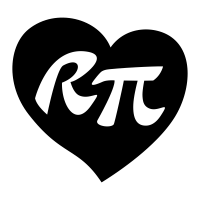Getting Started with the Raspberry Pi 3 Model B+
Raspberry Pi 3 Model B+ is a mini computer with 4 ARM 64-bit CPUs @ 1.4GHz, 1GB of RAM, and 1080P integrated graphics. Unlike traditional x86 (Intel/AMD) computers, it does not have a built-in BIOS but rather loads it from the MicroSD card along with the operating system(s). You will need a properly pre-flashed MicroSD card in order to get a working system. Without the correct software loaded, the board will not display anything.
Powering the Board
The board can be powered via the MicroUSB port or by a PoE switch with the addition of a PoE HAT. At full load with CPU + GPU + peripherals, the board will consume about 2.2A or 11W.
When powering by the MicroUSB port, the voltage output should be at least 5.1V at all times to maintain maximum performance (1.4GHz with adequate cooling). Standard MicroUSB power adapters only provide 5.0V and your board will work in a low power state (600MHz) at full load and display a lightning bolt in the right corner of the screen.
Power Supplies
We have custom designed 5.25V power supplies for this reason that deliver at least 5.1V up to 2.5A. Beware of power supplies that advertise themselves as anything higher than 2.5A because the MicroUSB plug pins cannot handle more than 2.5A without serious voltage drop and fire risk.
Brown Out and Black Out
Should the voltage fall below 4.5V even if for a split second, your board may spontaneously reboot or not boot at all. The red LED on your Raspberry Pi 3 Model B+ should never blink or turn off at anytime after power on.
Software
Raspbian is the preferred operating system to get started with the Raspberry Pi 3 Model B+. It has a desktop like user interface based on LXDE and is maintained by the Raspberry Pi Foundation. You can download the image files on the official Raspberry Pi website.
We also released improved images with tweaks to boost performance and increase stability that are based on the images mentioned above. More information about these improved images can be found under the Raspberry Pi section of the forum.
Flashing MicroSD card
For Windows users, we recommend using Win32DiskImager. After you have downloaded the zip compressed image, make sure to extract the zip file before loading the image file (ending in .img) into Win32DiskImager. Make sure you have backed up any valuable data on the MicroSD card before you click write because it will erase all of the data on the MicroSD card!
Plug and Go
After imaging the MicroSD card, you can plug it into your Raspberry Pi and connect the power, HDMI, and any USB devices such as keyboard or mouse.
If anything is unclear, please comment below and we will help you through it.
To Be Continued...
